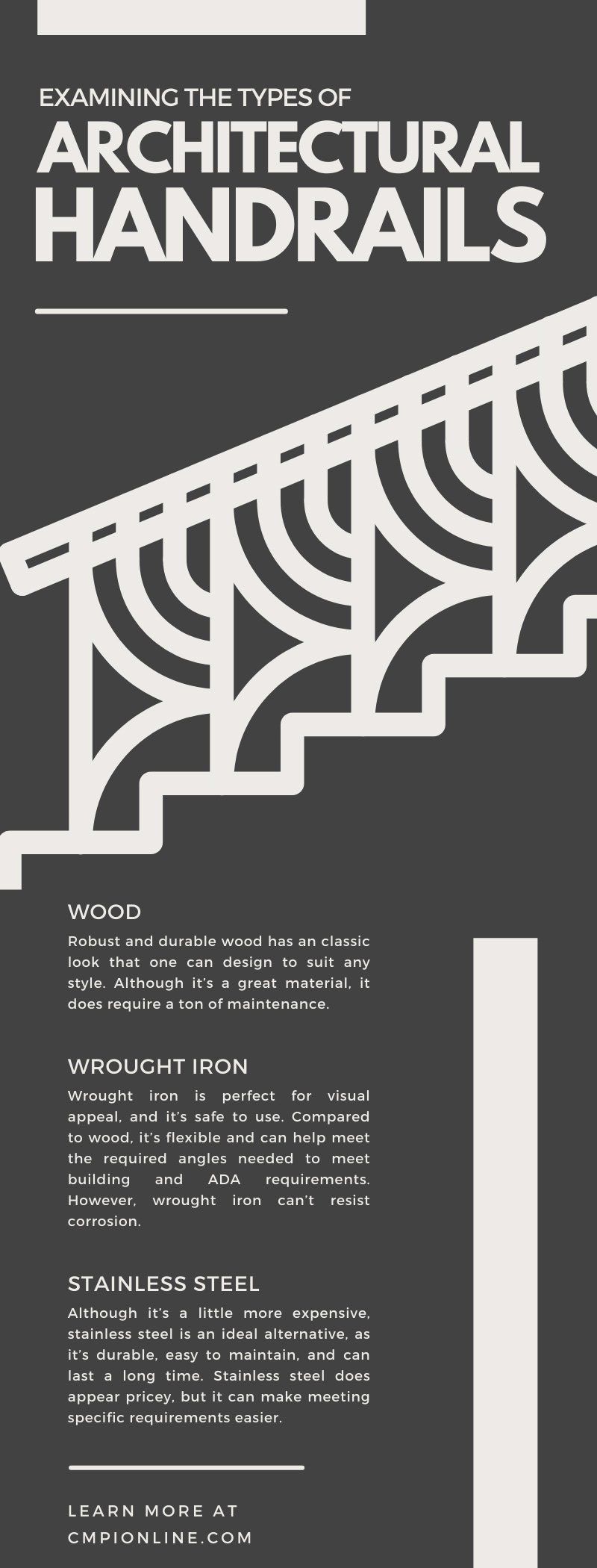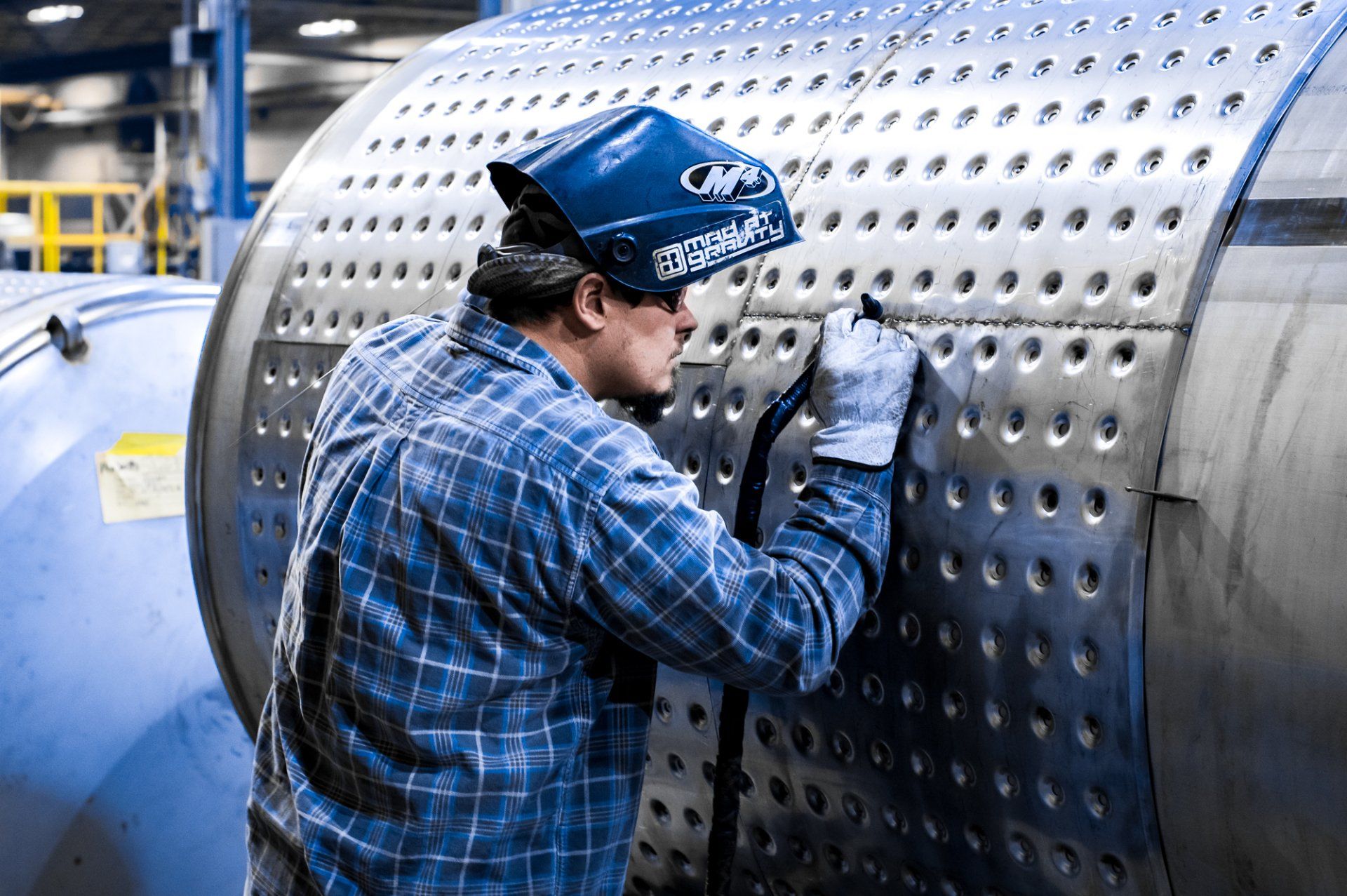Examining the Types of Architectural Handrails

Have you ever seen pictures and stared in awe at their beauty? If so, you might have fallen in love and become inspired to learn more about them. The same thing can happen when you look at architecture handrails. You can become smitten at first sight and go off to discover the traditional styles and the next best trends in architectural handrails alike. Although we receive inspiration through handrails, they aren’t just for show. We utilize them for safety and ensuring a building meets specific standards as well. Here’s your opportunity to follow along with us while examining the types of architectural handrails.
The Difference Between Handrails and Stair Rails
Before we start examining the types of architectural handrails, we first need to know the difference between handrails and stair rails. When you see those two terms, you may assume that they’re the same thing. In reality, they’re not synonymous, though.
The one difference we can take away here is that one rail type meets the Americans with Disabilities Act standards. It takes into account the demanding design requirements that ensure safety and stability for disabled individuals. The rail type that meets those qualifications is the handrail. People with limited mobility can firmly grip it to move across a ramp or other sloped area safely.
A stair rail is different, as designers intend it to prevent people from falling off the sides of the stairs in general. That’s the primary difference between handrails and stair rails.
The Functional Handrail vs. The Decorative Handrail
When trying to remain compliant with ADA guidelines, handrails need to gain specific modifications. These can change aspects like the bracket design and the grip type. Here’s a further breakdown of what a functional handrail looks like compared to a purely decorative one.
The Diameter
A handrail that complies with ADA regulations has a minimum of 1¼ inches and a maximum of 2 inches in its diameter. If there’s no circular handrail, the diameter must then be at 2¼ inches and have a perimeter measurement read with a minimum of 4 inches and a maximum of 6¼ inches.
A decorative handrail that’s non-functional and doesn’t meet the standards of the ADA act is only allowed in residential buildings. When the non-functional handrail is greater than 6¼ inches, it must have a grasp on the side between 1¼ and 2¾ inches.
The Bracket Design
The bracket is present in many designs. Brackets must not shave any blockage that prevents a user from walking up or down a ramp to meet ADA regulations. When attached to the wall, the brackets must be at a distance from the wall of at least 1½ inches.
Additionally, brackets must be in the shape of the letter L. This is because this is easier for those with limited mobilities to use. The L-shaped struts help guide them around better than other types.
The Handrail Regulations
Depending on where your handrails sit, you must meet more than ADA regulations; you must account for building codes as well. Residential buildings are any private buildings that house families. Additionally, this definition includes apartment complexes. Business buildings are commercial, industrial, and public-use buildings.
The Building Codes vs. ADA Requirements
When dealing with building codes, a handrail building project must meet specific requirements before it can become operable. The buildings codes between projects may vary. But many local and international building code standards are the same.
There’s plenty of overlap between the two when it comes to commercial buildings as well. While building codes have specific safety guidelines, the ADA ideals focus on the accessibility of the handrail. In a commercial building, handrails have different requirements that builders must meet. These may have to do with factors like power and efficiency. Some of the ADA requirements fall in line with residential building codes during inspections.
The Regulations for Handrails
There are many regulations that handrails need to meet before they can become usable. Here’s a further breakdown of what the handrails must have before a commercial building or residence can use them.
- At least one side of a pathway needs a handrail when there are two or more steps. A walkway is only a ramp if it has a slope greater than 1:20. Ramps also need handrails. This is a requirement for all commercial, ADA, and residential locations.
- In commercial and ADA locations, handrails must go on both sides of the stairway or ramp. The stairway and ramp cannot span more than 30 inches from the handrails. The only exception to this rule is when there are big sets of steps installed.
- Handrails need to extend over 12 inches for the landing. The handrails must be at equal angles relative to the stairs and must go beyond the nose of the base.
Choosing the Right Handrail Material
Your handrail needs a specific material, but there are many choices. So, to help you pick the right option, we’ve narrowed the materials down to the top three choices that are great to use when making architectural handrails.
Wood
Robust and durable wood has an classic look that one can design to suit any style. Although it’s a great material, it does require a ton of maintenance. Before a wooden handrail can receive authorization for use, the wood needs to undergo a coating and maintenance process. A downside to handrails made from wood is that they won’t meet regulations often. The reason for this is that they often don’t have the correct angles. Furthermore, they can chip easily over time. It’s better to use wood to decorate handrails.
Wrought Iron
Wrought iron is perfect for visual appeal, and it’s safe to use. Compared to wood, it’s flexible and can help meet the required angles needed to meet building and ADA requirements. However, wrought iron can’t resist corrosion. Also, it’s harder to grip it firmly.
Stainless Steel
Although it’s a little more expensive, stainless steel is an ideal alternative, as it’s durable, easy to maintain, and can last a long time. Stainless steel does appear pricey, but it can make meeting specific requirements easier.
The suitable architectural handrail material depends on your style and what requirements you need to meet. Custom Manufacturing & Polishing, Inc. has the right tools to help make the exact architectural handrails you want. At the same time, they can help you meet the requirements for building and ADA codes and regulations. For more information on handrails, reach out and contact us today.






